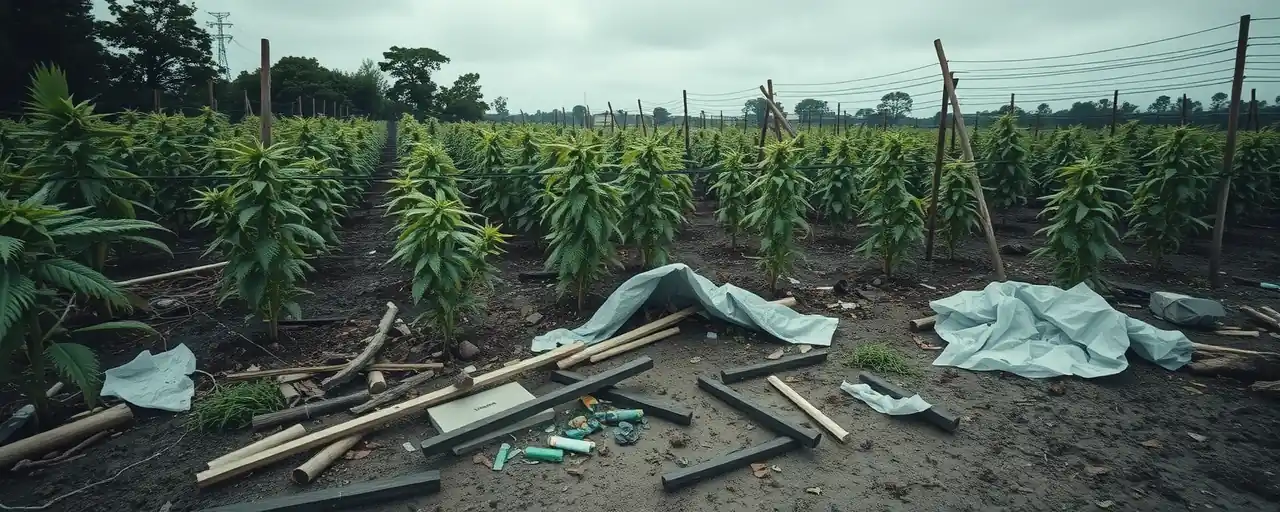A Sweeping Operation in the Central Valley
In May 2025, over 200 law enforcement officers descended on California’s Central Valley, targeting illegal cannabis operations across 4,600 square miles. The Unified Cannabis Enforcement Task Force, uniting 15 state, local, and federal agencies, served 71 search warrants in Kern, Kings, and Tulare counties. The result was a record-breaking seizure: 105,700 cannabis plants, 22,057 pounds of processed product, and nine firearms, valued at $123.5 million. This historic raid aimed to dismantle a black market that undermines California’s legal cannabis industry and damages the environment.
The operation’s complexity was striking. Agencies like the California Department of Fish and Wildlife, the Department of Cannabis Control, and the U.S. Drug Enforcement Administration worked alongside local sheriffs and the California National Guard. Several individuals were detained, with prosecutions pending. The raid highlights California’s aggressive stance against illicit cultivation, yet it also prompts deeper questions about the state’s cannabis policies and their long-term impact.
The Black Market’s Staying Power
Since legalizing recreational cannabis in 2016, California has built the world’s largest regulated market. Despite this, illegal cannabis thrives. High taxes and compliance costs burden legal operators, while illicit growers dodge regulations and offer lower prices. Organized crime networks, including transnational groups, fuel the trade, smuggling cannabis to states where it remains illegal. In 2024, the task force seized $534 million in illicit product, a sign of the black market’s stubborn grip.
Economic disparities drive this cycle. Legal businesses face steep licensing fees and limited banking access, while illegal operators often face minor fines, sometimes as low as $500. This imbalance allows the black market to flourish, eroding the competitive edge of licensed growers who follow strict environmental and labor rules. The Central Valley raid dealt a blow, but the broader challenge of balancing enforcement with market reforms persists.
Nature Under Threat
Illegal cannabis cultivation leaves a heavy environmental footprint. During the May raid, officers discovered banned pesticides at eight sites, substances that poison wildlife and contaminate soil. These grows siphon millions of liters of water daily, clear forests, and destabilize ecosystems. With an estimated 50,000 illegal grow sites statewide, cleanup costs can reach $17,700 per acre, and annual restoration efforts exceed $90 million. Endangered species, such as Pacific fishers and spotted owls, suffer from toxic chemicals found in 80% of their populations.
The ecological toll demands action. The task force’s raids aim to curb these harms, but the vast scale of illicit operations strains resources. Protecting California’s natural landscapes and public health requires sustained effort, as unchecked grows continue to threaten biodiversity and water systems.
Diverse Views on the Path Forward
The raid has ignited discussion. State officials, including Charlton H. Bonham of the Department of Fish and Wildlife, commend the operation’s teamwork, emphasizing its role in preserving natural resources. Nicole Elliott of the Department of Cannabis Control views it as a stand for community safety and market integrity. Their perspective underscores the value of coordinated enforcement in tackling illegal activity.
Yet, some advocates for cannabis reform argue that enforcement alone misses the mark. They call for lower taxes and simpler regulations to strengthen legal operators, reducing the black market’s appeal. Others push for federal legalization to create consistent rules and weaken illicit networks. Policymakers favoring market-driven solutions suggest easing burdens on licensed businesses could naturally shrink illegal trade. These debates reveal the issue’s complexity, with no single solution in sight.
Charting the Future
Since its launch in 2022, the task force has seized over $650 million in illicit cannabis, with the Central Valley operation as its largest yet. Still, the black market claims up to 40% of California’s cannabis market, signaling that raids alone cannot solve the problem. Strengthening the legal industry through policy changes, like tax relief or expanded banking access, could complement enforcement efforts. Recent data shows growth in the regulated market, with stable prices and increasing value, but challenges remain.
Environmental protection is equally urgent. Ongoing collaboration among agencies is vital to reduce ecological damage and safeguard public health. California’s experience offers lessons for other states grappling with similar issues, as the balance between enforcement and reform shapes national cannabis policy discussions.
The Central Valley raid underscores California’s resolve to confront illegal cannabis. Moving forward, addressing economic, environmental, and social factors will be key to building a sustainable legal market. The state’s efforts reflect a broader quest for solutions that benefit communities, ecosystems, and the economy.
